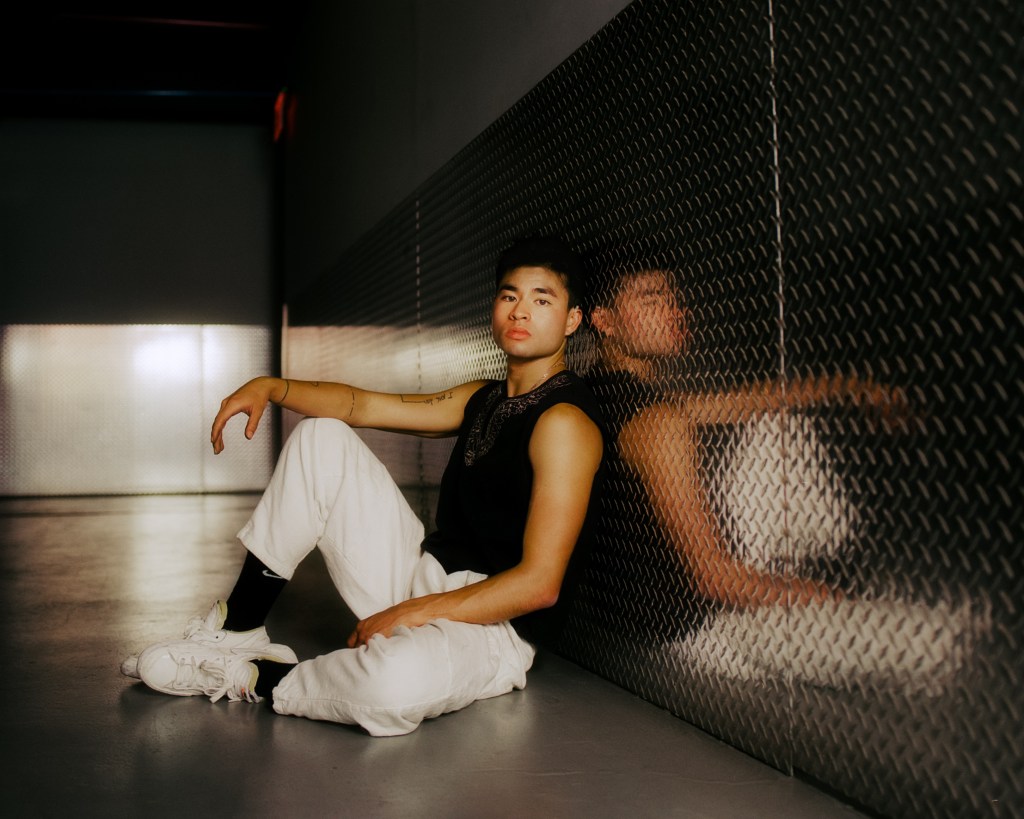What do drag queens and the WWE have in common?
Heels. But that’s just the start.
Videos by VICE
At first glance, wrestling and drag sound like just about the most disparate worlds one could imagine—one a sweat-and-testosterone fueled display of dominance and aggression, the other a foundation-and-hot-glue drizzled spectacle of feminine prowess.
But the two have more in common than you may think. After all, as RuPaul’s famous quip goes, you’re born naked and the rest is drag. And if everything is wrestling in our post-Trump world of kayfabe reality, the intersection between the two bears interesting revelations about masculinity and gender performance today.
Before the shirt-tearing entrances and Stone Cold Stunners, wrestling has always been a show, first and foremost, complete with heroes, villains (otherwise known as heels) and outlandish story lines. The form is closer to slapstick comedy than anything else, a vaudevillian performance that bears uncanny resemblance to that of drag. At least that’s how the Nobodies, a Brooklyn-based trio of two drag queens and a DJ, see it. Their biweekly YouTube wrestling talk show is dedicated to breaking down every outfit and booty that enters the ring—sometimes the actual wrestling itself, too—and lending a distinctly queer viewpoint to an otherwise decidedly straight space.
The trio have drawn in a surprising niche of folks who enjoy both drag and wrestling, attracting tens of thousands of views on their recaps since launching their channel in May. According to Nobodies member and drag queen Ariel Italic, the group began as a live show, with their name a cheeky tribute to the group’s relatively low profile—they’re nobodies watching wrestling, and nobody else is watching wrestling in drag, too.
Italic said her interest in the sport was mostly accidental. “I only started watching [wrestling] because [fellow Nobodies member DJ Accident Report] put it on before Drag Race,” Italic said. “I really was sort of tolerant of it… It took me a while to realize that they weren’t just physical, individual fights. That there are characters.”
In both realms, character is foundational, and if nothing else, Hulk Hogan and Alaska Thunderfuck share a devotion to the imaginative, vividly-enacted personalities created by their performers. And whether on the runway or in the ring, emotions run high. “There’s a lot of explosion of feelings. And in drag it would turn into a lip sync, but in wrestling it turns into a fight,” said DJ Accident Report.
For Jesse Tow, a 29-year-old policy researcher in Nashville, that overlap became apparent after making a trade-off with his girlfriend.
“I pitched [wrestling] as a reality-style soap opera competition, the perfect change of pace from prestige TV,” Tow said. “She was game to give it a shot, provided I watch RuPaul’s Drag Race in return.” Now, the two are fans of both; with Tow dutifully following the recently-concluded season of Drag Race alongside his girlfriend, who has also gotten into WWE.
Drag queens and wrestlers alike take pains to carefully craft their personas, outfits, makeup and on-stage maneuvers. And comparing the two brings interesting ideas about masculinity and how some view the gender binary into sharp relief. You may never see a wrestler like Bray Wyatt in a drag show, but the way his performances mine masculinity isn’t too far removed from how Bianca del Rio mines femininity for her own.
Both drag queens and wrestlers, said Nobodies member Lady Bearica Andrews, become “this hyper-version of your person. There’s these hyper-masculine dudes beating each other up, and then these hyper-feminine but also masculine women that are beating people up.” Drag, she continued, has always been a comment on how masculinity and femininity play off each other.
“The comparison I always give to people when they ask ‘why wrestling?’ is that male wrestlers are like male drag kings,” Italic said. “They’re just like dudes putting on a masculine presentation and putting on a character, and that’s their drag.”
“I was looking at how our videos are received, and I feel like wrestling is this gateway drug into recognizing there’s a performative aspect to gender,” Italic continued. “And then they see a drag wrestling video and they follow the trail of breadcrumbs. It’s like the first step in a 12-step program.”
And both drag and wrestling offer a platform for performers to express their characters’—and even their own—sexuality. “I feel like so much of drag is rooted in challenging gender boundaries and, in turn, static views of sexuality,” Tow said.
The same can be said in wrestling, where performers like Gorgeous George or Goldust made their names by challenging the masculine undertones of the WWE—though those characters, it’s worth noting, were often the butt of homophobic jokes. Though the WWE has made strides in recent years, they’ve yet to achieve a marked measure of LGBTQ equality. But that doesn’t mean queerness within the ring is entirely nonexistent. “There are characters who hint at being queer,” DJ Accident Report said. “There’s a wrestling trope of the pretty boy wrestler, who is kind of cowardly, because he’s beautiful and doesn’t want to get his face hurt. And there’s of course a gay subtext to that.”
The beauty and glory of both worlds reaches far beyond six-inch heels and body slams. Both arenas are spaces where reality is suspended, if only for a brief moment. It’s where people are free to become a version of themselves that’s entirely self-determined. And after heels are quashed, queens shantay away and the lights dim, the potential impact of each on how we express masculinity and gender in America may linger more than you’d expect.
Camila Martinez-Granata is a New York City–based writer.




